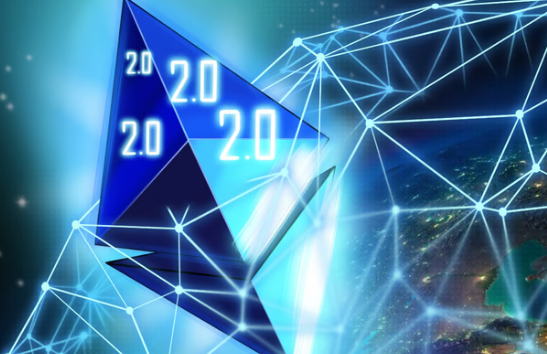Ethereum 2.0: What You Need to Know About the Upgrade
Ethereum, the world’s second-largest cryptocurrency by market capitalization, has long been at the forefront of blockchain innovation. With the launch of Ethereum 2.0, the blockchain aims to overcome critical issues like scalability, energy efficiency, and security. In this review, we’ll delve into everything you need to know about the Ethereum 2.0 upgrade—how it works, its key features, pros and cons, and how it compares to other blockchain alternatives.
Ethereum 2.0 represents a monumental step forward for the Ethereum blockchain. It is an upgrade that seeks to address the current limitations of Ethereum 1.0, particularly in terms of transaction throughput and energy consumption. Ethereum’s transition from a Proof of Work (PoW) consensus mechanism to a more scalable and sustainable Proof of Stake (PoS) system is expected to reshape the entire ecosystem, benefiting developers, users, and investors alike.
The upgrade is being rolled out in multiple phases and will take several years to fully implement. However, the initial launch of Ethereum 2.0 in December 2020, marked by the activation of the Beacon Chain, has set the stage for the blockchain’s next evolution.
What is Ethereum 2.0: What You Need to Know About the Upgrade?
Ethereum 2.0, also known as “Eth2” or Serenity, is a long-anticipated upgrade to the Ethereum network. The primary goals of this upgrade are to enhance scalability, improve security, and significantly reduce the network’s energy consumption by transitioning from Proof of Work to Proof of Stake.
Difference Between Ethereum 1.0 and Ethereum 2.0
Ethereum 1.0 uses the Proof of Work (PoW) mechanism, where miners solve complex algorithms to validate transactions and secure the network. This approach, while effective in terms of security, is energy-intensive and cannot process a high volume of transactions quickly.
In contrast, Ethereum 2.0 introduces Proof of Stake (PoS), a consensus mechanism that replaces miners with validators. Validators are chosen to confirm blocks based on the amount of ETH they “stake,” or lock up as collateral, thus significantly reducing the energy required to run the network.
Additionally, Ethereum 2.0 introduces Sharding, a process that divides the network into multiple chains, or “shards,” enabling parallel processing of transactions. This boosts the network’s scalability, allowing it to process thousands of transactions per second.
How Ethereum 2.0: What You Need to Know About the Upgrade Works
Ethereum 2.0 is being deployed in phases to ensure a smooth and secure transition from Ethereum 1.0. The key changes revolve around the shift to Proof of Stake and the introduction of Sharding.
Proof of Stake (PoS)
In a PoS system, validators are selected to confirm blocks based on the amount of ETH they stake. To become a validator, one needs to lock in a minimum of 32 ETH. Validators are rewarded for confirming transactions and adding new blocks to the blockchain. This mechanism is more energy-efficient because it eliminates the need for powerful mining hardware and reduces the network’s carbon footprint.
Sharding
Sharding divides the Ethereum network into multiple smaller chains called shards, each capable of processing its own transactions and smart contracts. This enables the network to handle thousands of transactions in parallel, drastically improving scalability.
The Ethereum 2.0 Phases
Ethereum 2.0 is being released in several key phases:
- Phase 0: Beacon Chain – Launched in December 2020, it introduced PoS to the Ethereum ecosystem but does not process transactions or smart contracts. It serves as the foundation for future phases.
- Phase 1: Shard Chains – This phase is expected to introduce 64 shard chains, drastically increasing the network’s transaction throughput.
- Phase 1.5: The Merge – This phase will merge the current Ethereum Mainnet (still on PoW) with the PoS-based Beacon Chain.
- Phase 2: Full Implementation – Expected in the future, this phase will allow Ethereum 2.0 to be fully functional, enabling smart contracts and dApps across the network.
Features of Ethereum 2.0: What You Need to Know About the Upgrade
Ethereum 2.0 brings several exciting features that address the limitations of the original Ethereum network.
1. Proof of Stake (PoS)
One of the most significant changes is Ethereum’s shift from Proof of Work to Proof of Stake. This allows validators to participate in securing the network by staking their ETH, which requires significantly less energy than the traditional mining process used in PoW.
2. Sharding
Sharding is the division of the Ethereum network into smaller, independent shard chains. Each shard chain processes transactions and smart contracts independently, allowing the network to handle thousands of transactions per second and greatly improving scalability.
3. Energy Efficiency
PoS is a more energy-efficient consensus mechanism, as it does not rely on energy-intensive mining rigs. Ethereum 2.0 is expected to use 99% less energy than Ethereum 1.0, making it more environmentally friendly.
4. Security
Ethereum 2.0 includes several enhancements to make the network more secure. The PoS mechanism, for example, reduces the risk of a 51% attack, as an attacker would need to control a majority of staked ETH rather than computational power.
5. Reduced Transaction Fees
With the introduction of sharding and increased scalability, Ethereum 2.0 is expected to reduce gas fees (transaction fees), which have been a major pain point for users on the Ethereum 1.0 network.
Pros of Ethereum 2.0: What You Need to Know About the Upgrade
| Pros | Details |
|---|---|
| Energy Efficiency | PoS reduces energy consumption by over 99%, making Ethereum greener than PoW-based systems. |
| Scalability | Sharding allows Ethereum to process thousands of transactions per second. |
| Security Improvements | The PoS mechanism reduces risks like 51% attacks, enhancing network security. |
| Lower Transaction Fees | Sharding and improved efficiency help to lower gas fees for users. |
| Decentralization | PoS allows more participants to become validators, improving decentralization. |
Cons of Ethereum 2.0: What You Need to Know About the Upgrade
| Cons | Details |
|---|---|
| Complex Transition | The multi-phase rollout means it could take years for full implementation. |
| Centralization Risks | Larger ETH holders have an advantage in staking and could potentially centralize power. |
| High Entry Requirements for Validators | To become a validator, you need to stake 32 ETH, which may limit participation. |
| Uncertainty in Timeline | Phases could face delays, prolonging Ethereum 1.0’s scalability and fee issues. |
Ethereum 2.0: What You Need to Know About the Upgrade Alternatives
While Ethereum 2.0 is groundbreaking, other blockchain platforms offer different approaches to scalability and consensus mechanisms. Here’s how Ethereum 2.0 compares to its alternatives:
| Blockchain | Consensus Mechanism | Scalability | Energy Efficiency | Security |
|---|---|---|---|---|
| Ethereum 2.0 | Proof of Stake (PoS) | High (with sharding) | High | Strong |
| Bitcoin | Proof of Work (PoW) | Low | Low (energy-intensive) | Strong |
| Polkadot | Nominated PoS | High | High | Strong |
| Cardano | Proof of Stake (PoS) | High | High | Strong |
Conclusion and Verdict: Ethereum 2.0: What You Need to Know About the Upgrade
Ethereum 2.0 marks a massive leap forward for the Ethereum blockchain, addressing critical issues like scalability, security, and energy consumption. The transition to Proof of Stake and the introduction of sharding are set to make Ethereum more efficient and user-friendly. Although the upgrade process is lengthy and may face challenges, the potential rewards are immense. For users, developers, and investors, Ethereum 2.0 offers a more sustainable, scalable, and secure future for decentralized applications and smart contracts.
FAQs: Ethereum 2.0: What You Need to Know About the Upgrade
- What is the Ethereum 2.0 upgrade?
Ethereum 2.0 is a multi-phase upgrade that transitions the Ethereum network from Proof of Work to Proof of Stake, improving scalability, security, and energy efficiency. - How does Ethereum 2.0 improve scalability?
Ethereum 2.0 introduces sharding, which divides the network into smaller chains, enabling parallel processing of transactions and increasing the network’s capacity. - When will Ethereum 2.0 be fully implemented?
Ethereum 2.0 is being rolled out in phases, with the final phase expected within the next few years, although exact timelines remain uncertain. - Will Ethereum 2.0 reduce gas fees?
Yes, the increased scalability from sharding is expected to lower gas fees as the network will be able to handle more transactions at once. - **What is the minimum stake required for validator.



